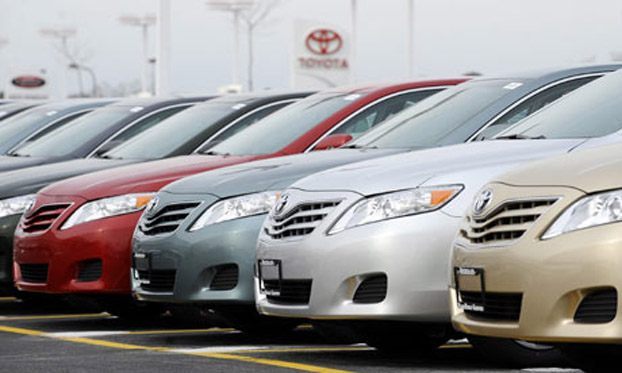The future of automotive technology is being driven by turbocharged engines, according to an EPA official. By 2025, when the new CAFE standards take full effect, it's estimated that 90% of vehicles on the market will be equipped with turbocharged powertrains. This raises an interesting question: **Could every new Toyota model soon come with a turbocharged engine?**

*If the EPA is right, all of these Toyota models could be offered with a turbocharged engine. What do you think? Fact or Fiction?*
At the SAE World Congress, WardsAuto spoke with Edward Nam, director of the EPA’s Light Duty Vehicles & Small Engines Center in Ann Arbor, MI. He explained that current turbochargers typically operate at around 261 psi (18 bar), but by 2016, units capable of 348 psi (24 bar) are expected to hit the market and become widespread by 2025. This increase in pressure leads to greater efficiency and performance.
Nam emphasized that the EPA believes turbocharging technology will continue to evolve alongside engine improvements. Alongside this, advancements in 8-speed transmissions, low-rolling-resistance tires, and better aerodynamics will help automakers meet the 54.5 MPG target.
“We believe most automakers should be able to meet the standards largely through internal combustion engine advancements and emissions improvements,†Nam said. “There are many technologies available to help achieve these goals.â€
One of the key benefits of turbocharged engines is their ability to deliver more power from smaller displacement engines. For example, trucks like the Ford F-150 or Chevrolet Silverado could potentially run on just four cylinders, thanks to improved turbocharging systems.
While many manufacturers, including Toyota, are investing heavily in R&D for various powertrain solutions—including electric, hybrid, and diesel options—Nam noted that the EPA estimates only about 3% of the market will be made up of fully electric or plug-in hybrid vehicles. Diesel and other hybrid types will have some presence, but not as significant as turbocharged gasoline engines.
Despite the promising outlook, turbocharged engines still face criticism. Consumer Reports has raised concerns, pointing out that real-world fuel economy gains may not match the EPA’s estimates. Additionally, while the EPA projections suggest a potential savings of 4 billion barrels of oil and a reduction of 2.2 billion tons in greenhouse gas emissions between 2017 and 2025, these benefits come with higher upfront costs for consumers.
According to Nam, vehicles sold in 2025 could cost around $1,800 more than those from 2016. While the long-term fuel savings could reach $5,700 to $7,400 over a vehicle’s lifetime, the payback period might be too long for some buyers.
So, the big question remains: **Do you agree with the EPA that turbocharged engines are the future of the automotive industry?** Share your thoughts below.
---
**Related Posts:**
- [Toyota Wins Towing Safety Award – Only Automaker Adopting Standard](#)
- [2010 Prius News](#)
- [Lexus and Toyota Avalon Recall Hits Dealership Floors](#)
- [2015 Toyota Camry vs. 2015 Hyundai Sonata – NYIAS First Glance](#)
- [New Concept in India](#)
- [Toyota Trying to Attract Younger Drivers to Lexus with New Image](#)
Public Storage,Self-Storage,Building Mini Storage,Custom Mini Warehouse
FCX Metal Structure Co., Ltd. , https://www.fcxmetal.com